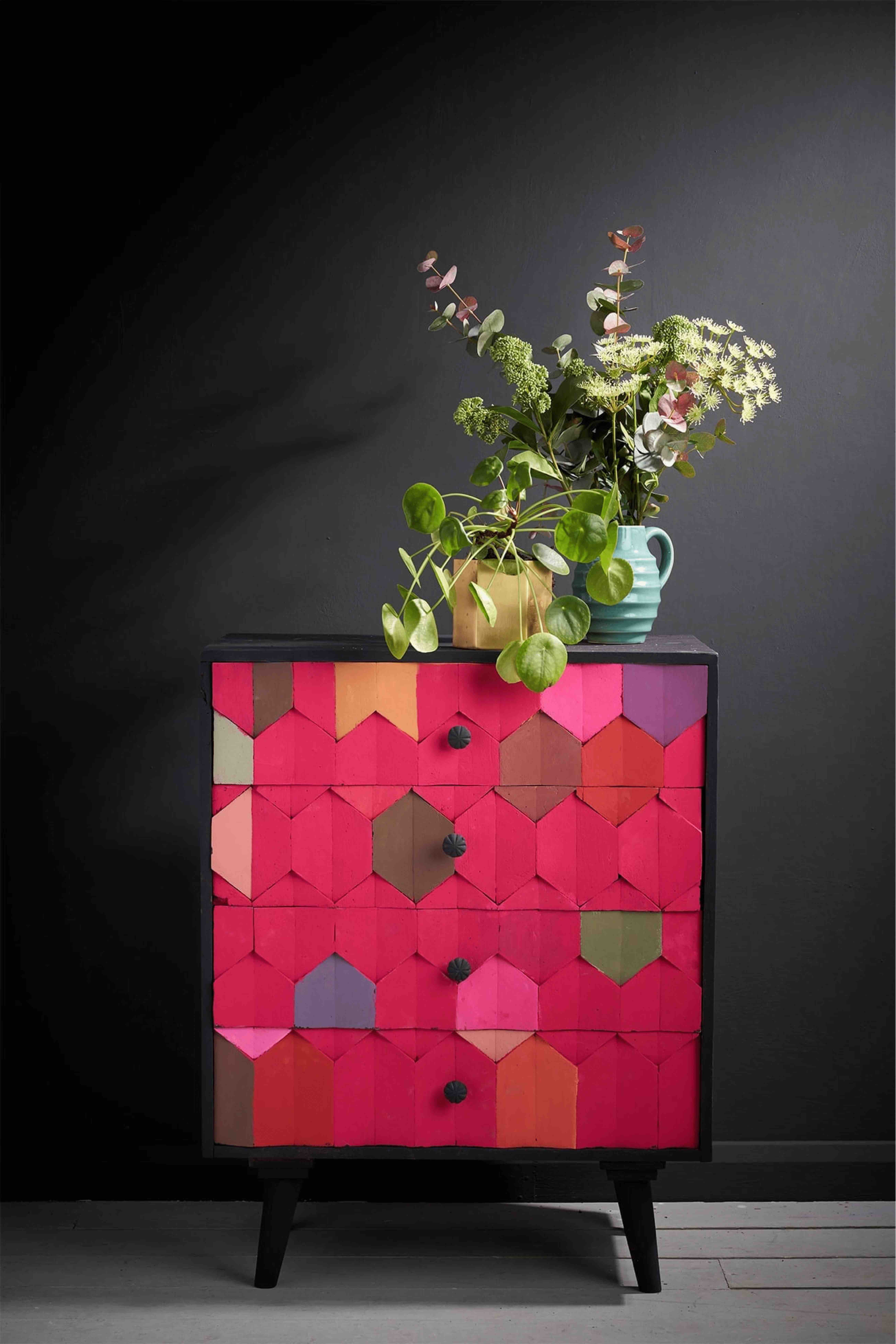Do I need to prep before using Chalk Paint?
Chalk Paint can be applied to almost any surface* without sanding or priming. Annie always advises performing a patch test before getting stuck in with painting. Don’t forget to stir Chalk Paint before use, to ensure a smooth and even colour.
Annie rarely cleans her furniture before painting, and instead just gets stuck right in. However, if you do wish to clean your surface before painting, ensure all excess soap is removed and the area is dry before applying paint. Bear in mind, in some cases, cleaning might activate an old finish which could get in the way of the Chalk Paint. If you do choose to clean your surface, we advise avoiding chemicals and only using warm water.
*Real teak and silicone cannot be painted.
On rare occasions you need to prime before using Chalk Paint:
- Heavily stained and dark oil-stained wood may need priming with clear shellac before painting. Red coloured wood and typical 1930/40s furniture will have sometimes been previously stained – a clear shellac needs to be applied to seal the surface, to prevent yellow or red tones coming through the Chalk Paint.
- If you’re using a shade of white, you may find stains come through the paint. You can patch test first. If required use a sealer such as a clear shellac prior to painting. Alternatively, Annie recommends using our Chalk Paint in Athenian Black underneath any shade of white to block stains.
On rare occasions you need to sand before using Chalk Paint:
- If your surface is highly polished, very lightly sand by hand to create a key so the Chalk Paint adheres.
- Lightly hand sand to create a key if painting over gloss paint.
- When painting over laminate or melamine, sand very lightly by hand to create a key and apply two thin coats of Chalk Paint.
If you are going to sand prior to painting, remember to take suitable health and safety measures such as wearing a dust mask.
Painting over previously waxed of lacquered surfaces:
It’s fine to paint over previously waxed or lacquered surfaces, just ensure the wax or lacquer is fully cured before doing so (these finishes take between 1-2 weeks to cure).
Do I need to prep before using Annie Sloan Satin Paint?
Satin Paint is ideal for interior wood and metal including interior doors, skirting boards, bannisters, radiators and window sills.
Annie rarely cleans her surfaces before painting, and instead just gets stuck in right away. However, if you do wish to clean your surface before painting, ensure all excess soap is removed before applying paint. Bear in mind, in some cases, cleaning might activate an old finish which could get in the way of the Satin Paint. If you do choose to clean your piece, avoid chemicals and only use warm water.
- You rarely need to sand before applying Satin Paint. However, if you are painting over a highly polished surface, or a surface previously painted with gloss paint, you may wish to lightly hand sand to create a key.
- Heavily stained and dark oil-stained wood may need priming with shellac before painting. Red coloured wood and typical 1930/40s furniture will have sometimes been previously stained – a clear shellac needs to be applied to seal the surface, to prevent yellow or red tones coming through the Satin Paint.
If you are going to sand prior to painting, remember to take suitable heath and after measures such as wearing a dust mask.
Please note: real teak cannot be painted.
Do I need to prep before using Annie Sloan Wall Paint?
Apply a mist coat on fresh plaster before applying Annie Sloan Wall Paint.
Maximising performance with prep
There are other occasions where you may want to advise your customer to prep to maximise their efforts when using both Chalk Paint and Satin Paint. Below is some further information which you may wish to consider:
When to prime if you want to maximise the potential of Chalk Paint and Annie Sloan Satin Paint:
- Untreated pine and new wood may need priming with shellac (to seal any knots and to stop them from leaking). When applying shellac, be sure to cover your entire surface to create an even finish.
- MDF type boards absorb a lot of water from the paint, so you may wish to mist coat first
- If any filler has been used to fill cracks or open joints etc, it is advised to apply an undercoat first, to ensure an even an even finish. You could use a mist coat to do this, or an additional layer of Chalk Paint.
- If your surface presents knots or is resinous, apply a primer or a layer of shellac all over.
If you ever experience ‘bleed through’ when painting furniture, apply a thin coat of shellac, wait for it to dry, then apply your paint as usual.
When to sand if you want to maximise the potential of Annie Sloan paints:
- Lightly sand to create a ‘key’ when painting over melamine or any other laminate/veneer coating.
Generally, when we refer to sanding, we mean a ‘light sand’ that will help create grip or a ‘key’ for the paint. Use a sanding pad to create a slight texture to help the paint adhere.

